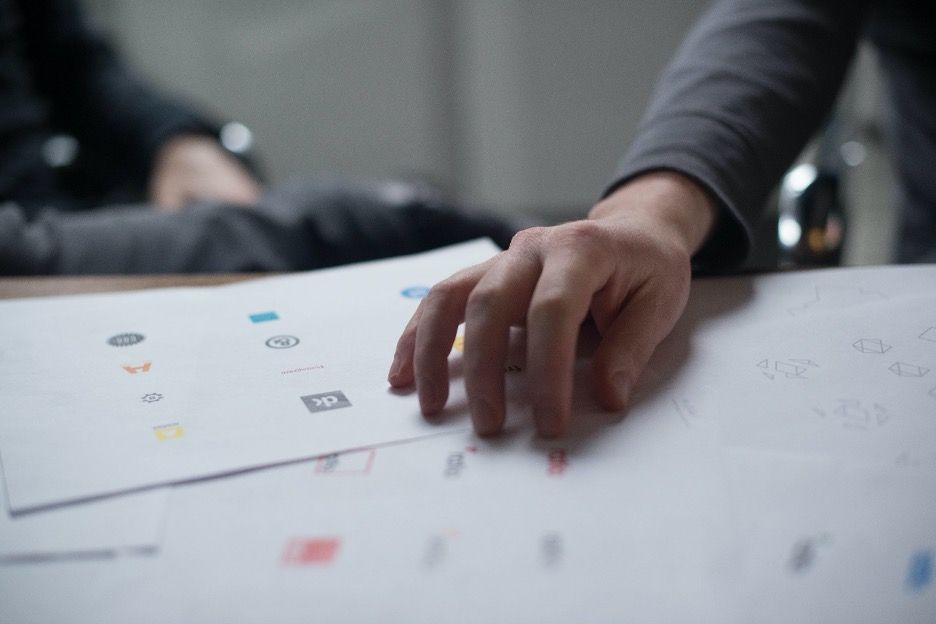7 Mistakes to Avoid When Designing a Logo for Your Company

A logo is a brand’s most immediate and visible communication tool. A well-designed logo tells everything someone needs to know about a brand: its identity, character, and personality. A logo designed with clear intentions sends a very precise and comprehensive message about what a brand is all about.
For these reasons, a brand logo needs to be crisp and memorable. To design such a logo, you’ll find hundreds of articles teaching you the foundations of a good logo; but what about a bad one? What makes a bad, ineffective, unintelligent logo that misses its mark?
That’s what we are going to talk about today.
The 7 Mistakes to Avoid When Designing a Logo:
Below, you will find information on the 7 factors that, if introduced in your process of logo design, create some of the most problematic design errors. We will also be sharing tips on how to avoid these potholes and continue on your path of successful logo design.
1. Cluttered Designs Where Too Much Is Going On
Design that overwhelms the senses whether in terms of too many colors or cluttered and complex symbols is a design that’ll turn people away. In the demanding and fiercely competitive market of today, if you are creating a busy design, you’re losing your audience — nobody has the time or the intent to decipher a complicated visual message.
Therefore, communicate your message as effectively as possible with a simple logo design. Be strategic when choosing your symbols, colors, and fonts. Everything on the logo should be telling a harmonious story that people can "get" in an instant. Because an instant is all you have to send your message and create your perception. So make it count.
2. Following Trends or Hopping on the Bandwagon
Have you ever seen the "I (heart) NY" logo? It was designed by the formidable graphic designer Milton Glaser in 1976 as part of a city tourism campaign. He designed it in the back of a taxi, and it’s regarded as one of the most well-known logos of all time. It has become forever associated with NYC and has become a pop-culture icon with imitations across industries, markets, and cultures.

While a business logo should not remain unchanged decades after decades, it should evolve with the brand. Designing it by following yearly trends is simply lazy, and can be catastrophic for a brand. You cannot design a timeless logo by following trends. Let your brand’s message and future vision become your guiding star. The more authentic and original you are in your interpretation of that message, the stronger your chances of creating a logo that’ll become memorable.
3. Irrelevant Symbols=Confusing Message
Now that we are clear on how a logo design process should be initiated, let’s talk about its parts. Symbols or icons play a huge role in brand communication for combination or pictorial logos.
For example, if you are creating a logo for laundry brand, using irrelvant icons as your logo symbol can throw your audience off. Every time you make people feel unsure of what they are looking at, you are hurting your client’s interests.
Use symbols and iconology that have a natural or established connection to the product/service you are designing for. That way, you are being clear in your communications and can avoid sending conflicting messages.
4. Off-the-Mark Fonts
Much like symbols, your font choice also plays a role in how an audience perceives your visual message. For example, if you have created an astounding font that you cannot wait to use in your next design project, think and reflect if it’s the right choice for this particular logo. Your ego cannot interfere with your design decisions.
An unassuming and friendly sans serif has no place for a law firm logo that wants to send a message of authority and objective professionalism. Similarly, an imposing serif font for a pet adoption agency may be way off the mark when it comes to effectively communicating brand character.
Therefore, be strategic in your font choices for your business logo and make sure they are in-line with the rest of the design.
5. Poor Color Choice
Color is the third staple of any logo design concept. It can have the biggest impact on your logo design as people derive certain meanings and sentiments from certain colors.
For example, red may be considered a sign of passion, but it is also the color of danger, war, and violence. In some cultures, it’s a sign of celebration and new beginnings.
So, keep your audience and the culture you are designing for in mind when you choose colors. Usually, logos only consist of two colors — primary and accent. Sometimes, you can see more than two colors in a company logo, and that’s fine. As long as you are keeping your message on-point and the design streamlined, you can have four or even five colors in your brand logo similar to Google’s logo, for example, or Ebay’s.
6. Common, Unoriginal, or Uninspired
Your logo can have all of the above mistakes that we’ve talked about and it still may be forgiven. But an uninspired and unoriginal logo is a hard pass.
Nobody likes a copycat approach — least of all your digital audience that is too smart for unimaginative designs. Learn the distinction between inspired and outright copying.
Creating an original logo may take a lot of time and effort, but it is also a design that can launch your career, skyrocket it, and help your client establish a successful footprint in the market. So be fearless, work hard, and don’t shy away from taking risks. Take the plunge.
7. Using Raster Images
Insipid and dull designs aren’t the only things that can dilute a brand’s visual message; sometimes it’s the technical flaws like raster designs that prevent a logo from flying high.
Raster images are dependent on pixels, which means, you cannot scale them to a larger size without destroying the image quality. This is a rookie mistake and should be avoided at all costs.
Always use a vector graphics program — such as Adobe Illustrator — when designing your logo. It keeps your design sharp and consistent no matter the scale you want to present it on. So whether you want to shrink your logo to fit a social media profile picture size or want to expand it to fit over your city’s biggest billboard, with vector graphics your image quality will remain untouched.
Over to You
To pull off a brilliant logo design execution, you must understand the brand’s message to its deepest core. The clearer you are about what a brand is all about, the simpler and more original your design approach will become. For that, ask questions from the clients and let them explain their concept to you. Don’t assume that you know it all — it’s their business and their baby, so let them tell you their story.
It’s then simply a matter of narrating it through your visuals.
About the Author Andrew Hoffman is a creative freelance writer who specializes in topics related to small business and startups, digital marketing and branding.
Back To All Posts?